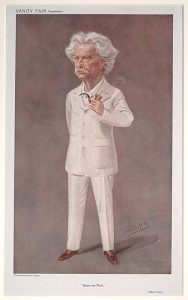5 Middle Adulthood: 40 – 70 Years
Jay Seitz
“Travel is fatal to prejudice, bigotry, and narrow-mindedness, and many of our people need it sorely on these accounts. Broad, wholesome, charitable views of men and things cannot be acquired by vegetating in one little corner of the earth all one’s lifetime.”
- Mark Twain (1869, The Innocents Abroad)

TABLE OF CONTENTS (TOC)
- Work vs. leisure
- Relationships in midlife
- Occupational challenges
- Gender, ethnicity, and discrimination
Work vs. leisure
A number of empirical studies have demonstrated the benefits of taking time away from work. For instance, it can mitigate burnout from job stress and improve physical and mental health, particularly if adults are physically active. But leisure time can also improve job satisfaction and improve productive time in the work environment as well as help midlife adults deal more effectively with balancing the obligations of family time and their professional lives.
Nonetheless, a significant number of middle-aged adults are hardly content in their workplace. Middle-aged professionals may become frustrated or disillusioned at work as they age. For instance, women may find themselves up against a glass ceiling, that is, organizational bias in the workplace that limits their career advancement. To be sure, they are twice as likely to quit their jobs as men.
Relationships in midlife
Starting around their 40s, men and women discover that their primary roles in relationships are in flux. Their parents are aging and often need to be taken care of, and if they have offspring, their kids are grown and don’t require the same kind of parenting, if at all. So midlife is a period of life with new kinds of challenges, as well as stressors.
Occupational challenges
The notion of a “midlife crisis” often centers on major life disruptions such as job loss, divorce, the death of parents, or the departure of children from the home as we mentioned above. Indeed, a sense of one’s own aging and the effort to compensate typically factor into perceptions of middle-age challenges, both personal and professional.
For instance, as the focus on career fades, personal relationships–including romantic ones–become more important. Awareness of mortality brings an increased priority for using the time one has remaining for investing in fewer but more rewarding connections to others and more rewarding occupational challenges.
Gender, ethnicity, and discrimination
About 42% of working women in the United States say they have faced discrimination on the job because of their gender (see diagram below). They report a broad array of personal experiences, ranging from earning less than their male counterparts for doing the same job to being passed over for important assignments.

But there is also age discrimination in the workplace, even though it violates US Department of Labor laws.
For instance, the Age Discrimination Act of 1975 prohibits discrimination on the basis of age in programs and activities receiving federal financial assistance. The earlier Age Discrimination in Employment Act of 1967 (ADEA) protects certain applicants and employees 40 years of age and older from discrimination on the basis of age in hiring, promotion, discharge, compensation, or terms, conditions, or privileges of employment and is enforced by the Equal Opportunity Employment Commission.
Then there is Section 188 of the Workforce Investment Act (WIA) of 1998, which prohibits discrimination against applicants, employees, and participants in WIA Title I-financially assisted programs and activities. In addition, WIA prohibits discrimination on the grounds of race, color, religion, sex, national origin, disability, political affiliation, or belief.
